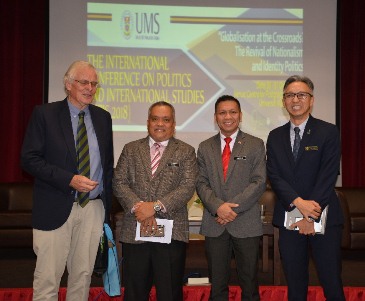 WEDNESDAY, 31 OCTOBER – The Centre for the Promotion of Knowledge and Language (PPIB) in collaboration with the International Relations Programme of the Faculty of Humanities, Arts and Heritage (FKSW) held an International Conference on Politics and International Studies (ICPIS) 2018 at the Centre for Postgraduate Studies Auditorium, Universiti Malaysia Sabah (UMS).
WEDNESDAY, 31 OCTOBER – The Centre for the Promotion of Knowledge and Language (PPIB) in collaboration with the International Relations Programme of the Faculty of Humanities, Arts and Heritage (FKSW) held an International Conference on Politics and International Studies (ICPIS) 2018 at the Centre for Postgraduate Studies Auditorium, Universiti Malaysia Sabah (UMS).
The two-day conference themed “Globalisation at the Crossroads? The Revival of Nationalism and Identity Politics” was attended by foreign and local participants including students from the International Relations Programme of FKSW.
In his speech, the Vice-Chancellor hoped that with the thought-provoking topics on political issues and international studies would lead to profound contribution to the corpus of knowledge which are vital for policy-making and further research. His speech was read by the Deputy Vice-Chancellor of Academic and International, Prof. Dr. Rasid Mail who officiated the inaugural conference.
Earlier, Director of Career Centre UMS and Conference Chair, Assoc. Prof. Dr. Lai Yew Meng reiterated that the conference promoted critical discussions and sharing of research, novel findings, including informed opinions.
Also in attendance were Assoc. Prof. Dr Jualang Gansau, the Dean of PPIB; and Prof. Dr. Anthony Milner of the University of Melbourne who was also the Keynote Speaker in this conference.


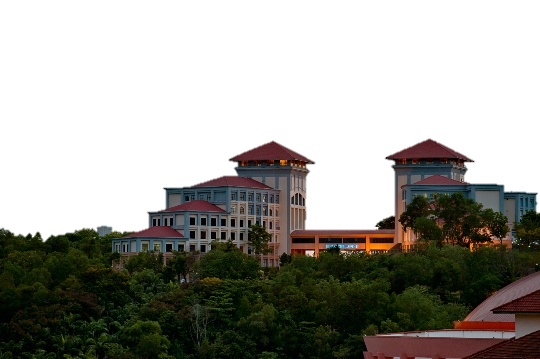
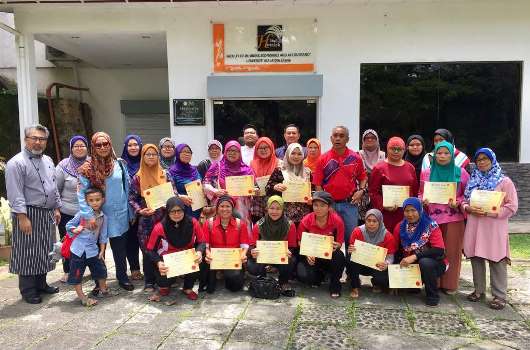 TUESDAY - As the Kampung Kobuni on a fast track to become the next tourism destination in Sabah, 21 villagers and homestay operators took part in a workshop on food preparation and handling at Hotelab, Universiti Malaysia Sabah (UMS) recently.
TUESDAY - As the Kampung Kobuni on a fast track to become the next tourism destination in Sabah, 21 villagers and homestay operators took part in a workshop on food preparation and handling at Hotelab, Universiti Malaysia Sabah (UMS) recently. WEDNESDAY, 03 OCTOBER - About 40 community members from Kampung Ovai and Kampung Kambizaan and students of Sekolah Menengah Kebangsaan St Mary spent their last Saturday morning partaking in river water quality monitoring.
WEDNESDAY, 03 OCTOBER - About 40 community members from Kampung Ovai and Kampung Kambizaan and students of Sekolah Menengah Kebangsaan St Mary spent their last Saturday morning partaking in river water quality monitoring.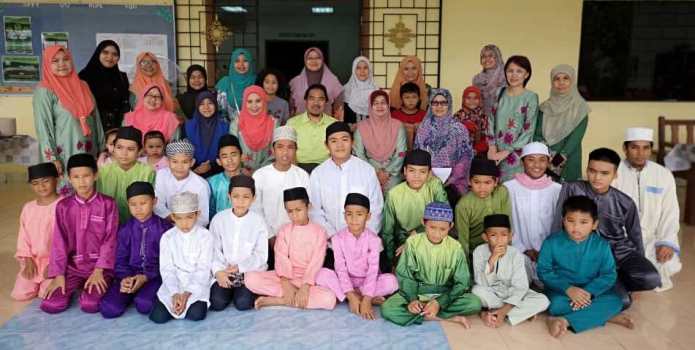 WEDNESDAY, 05 SEPTEMBER – A total of 21 poor and orphaned children of Home Tuaran situated at Kampung Kota, Tuaran Sabah were made ‘adopted children’ by some members of the Housewives and Women Staff Club Universiti Malaysia Sabah (KESUMBA) during the club’s recent visit there.
WEDNESDAY, 05 SEPTEMBER – A total of 21 poor and orphaned children of Home Tuaran situated at Kampung Kota, Tuaran Sabah were made ‘adopted children’ by some members of the Housewives and Women Staff Club Universiti Malaysia Sabah (KESUMBA) during the club’s recent visit there.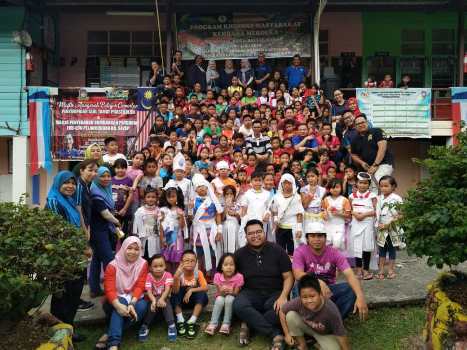 TUESDAY, 04 SEPTEMBER - Faculty of Business, Economics and Accountancy (FPEP) from Universiti Malaysia Sabah (UMS) showed its "Love for Malaysia" by performing their CSR project at Kampung Sayap, Kota Belud during Independence Day.
TUESDAY, 04 SEPTEMBER - Faculty of Business, Economics and Accountancy (FPEP) from Universiti Malaysia Sabah (UMS) showed its "Love for Malaysia" by performing their CSR project at Kampung Sayap, Kota Belud during Independence Day.